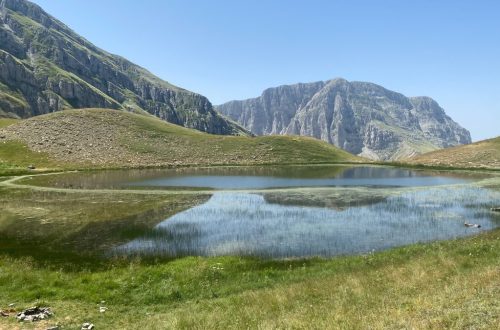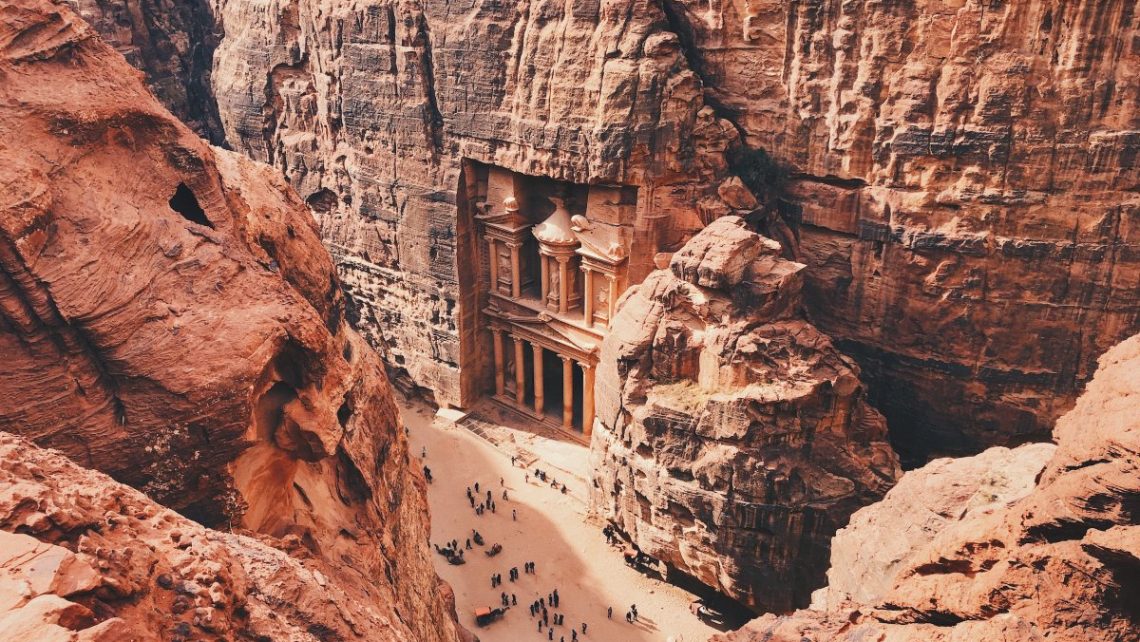
Is Petra Worth Visiting? Why I’d Never Go Back
When it comes to global tourism, there’s no denying that the ancient city of Petra in Jordan pops up on a lot of bucket lists. And why not? It’s a wonder of ancient architecture and has a rich history and cultural heritage.
However, I’m here to provide a different perspective—not to dissuade you, but to present you with an informed, different viewpoint. By the end of this read, you might be asking yourself: Is Petra worth Visiting?
If you are wondering how to plan a trip to Jordan and you’re struggling to find all the information you need, head to my complete guide for the country. You won’t regret it!
A Little Bit of History
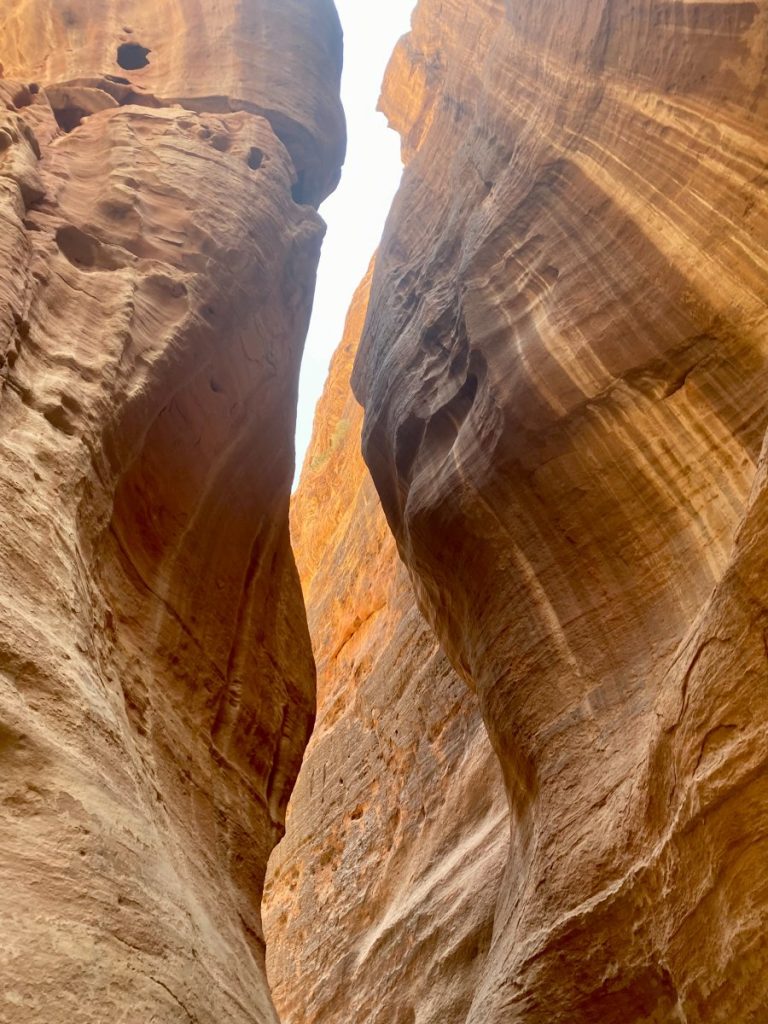
Petra is an ancient city located in the southwestern desert of Jordan. It was established as the capital city of the Nabateans, a nomadic Arab tribe, as early as the 4th century BC.
The city thrived under the Nabateans, becoming a vital crossroads for the silk and spice trade routes that linked China, India, and southern Arabia with Egypt, Syria, Greece, and Rome. However, the city began to decline after the Romans annexed the Nabatean Kingdom in 106 AD.
By the middle of the 7th century, Petra was largely abandoned and faded from public consciousness. It remained unknown to the Western world until it was rediscovered by Swiss explorer Johann Ludwig Burckhardt in 1812. rlds
Since then, Petra has attracted explorers, archaeologists, and tourists from around the world. In 1985, it was designated a UNESCO World Heritage Site and later listed as one of the Seven New Wonders of the World.
Is Petra safe for tourists?
Undeniably, the feeling of safety can genuinely affect a travel experience like no other. To answer that question – yes, Petra is considered to be a safe destination for tourists. Nonetheless, like any other popular tourist site around the world, it requires tourists to practice the usual precautions.
One of the first things that comes to your mind when planning a trip is insurance.
Safetywing’s Nomad Insurance is one of the best options available out there. With a maximum coverage of 365 days, they are a great option whether you are a Nomad or not!
They offer very low rates, but excellent coverage and immediate support (in a few minutes!). The best part? Nomad Insurance can be purchased even if you have left your home country already.
Lastly, they also cover extreme sports, something that can come in very handy if you are an adventurous soul.
The rugged terrain of Petra, however, demands you be mindful of their immediate surroundings. It’s essential to wear appropriate footwear and protective clothing to prevent accidents on its rocky paths during exploration.
What is the Best Time of Year to visit Petra?
If you’re wondering about the best time of year to visit Petra, let me help you break it down. The most comfortable seasons in terms of climate are spring (March to May) and autumn (September to November).
During these months, temperatures are moderate and the crowds are minimal, allowing you to feel the magic of Petra somewhat privately. There’s a beautiful crispness in the air, making the exploration more bearable during the day.
Summer (June to August) can be incredibly hot, with temperatures reaching up to 45°C (113°F). While the early morning and late evening offer cooler moments, walking around Petra at high noon can prove challenging. Is Petra worth visiting in the Summer? I am afraid not.
The winter period (December to February) sees fewer tourists but be careful of occasional rainy days. The temperatures can drop substantially, especially in the evenings and the nights.
How to Get to Petra
In order to visit Petra, you will have to reach the city of Wadi Musa first. The easiest way to do so is by renting a car. Therefore, I suggest the Monte Carlo car rentals, as my experience with them was terrific. You can find more about them in my travel guide on how to plan a trip to Jordan.
Several public buses operate daily between Amman and Petra. JETT, one of the largest bus companies in Jordan, operates daily bus services from Amman to Petra, and the journey takes about 3.5 to 4 hours.
Lastly, Shared taxis are another standard mode of transportation in Jordan. They depart from various locations in Amman and take passengers to Wadi Musa. The shared taxis are generally faster than buses but can be cramped and uncomfortable.
Should I Stay in Wadi Musa?
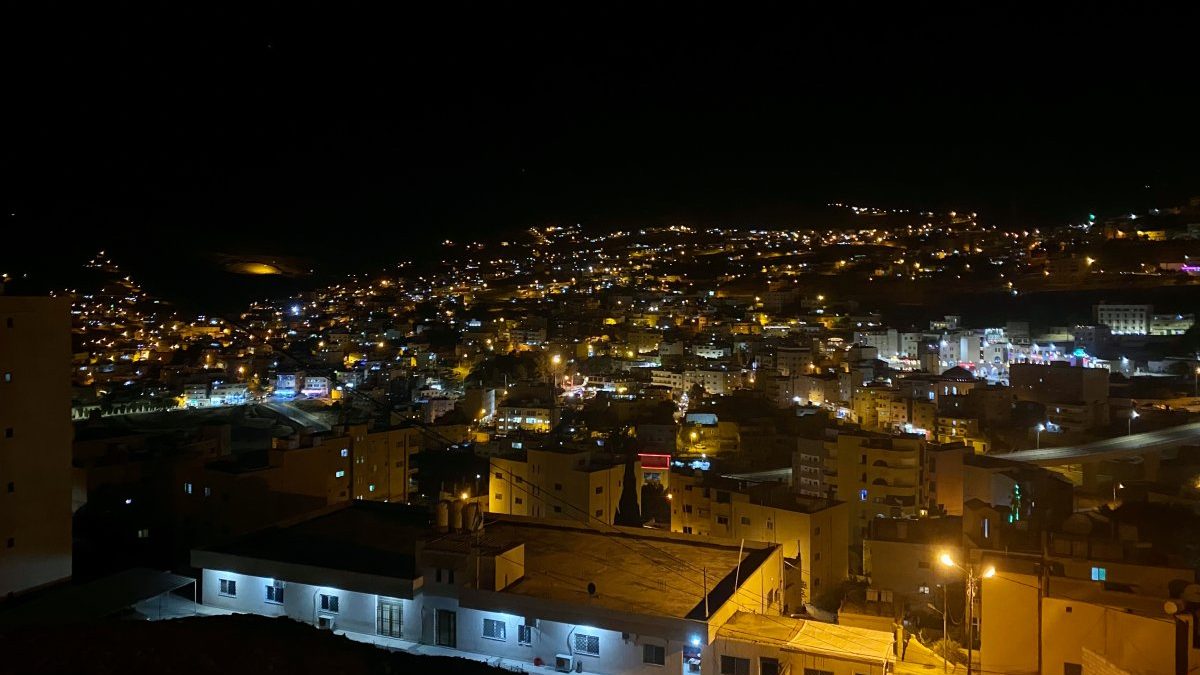
The short answer is yes, you should.
Wadi Musa (which translates to “Valley of Moses”) is a small town in southern Jordan. It is named after the biblical figure Moses, as it is believed that he passed through the valley and struck water from the rock for his followers at the site of Ain Musa (“Moses’ Spring”).
Wadi Musa itself is a town with a population of over 20,000 people. It offers a plant of different options for accommodation, restaurants, and shops.
The trip to Wadi Musa from most major Jordanian cities is tiring, and you will need at least a full day in the Petra site. That’s why you should dedicate at least 2 days there.
If you have a car, don’t forget to find a high viewpoint and enjoy the stars during nighttime. Just drive around the city and find a place that works for you. The serenity of the city during the Night will make it well worth it for you.
Where to Stay in Wadi Musa
Because the city is home to one of the most famous archaeological sites in the world, it only makes sense that there will be plenty of accommodation options available.
We stayed in the La Maison Hotel, which was budget-friendly and the rooms were clean and comfortable. The staff was very kind, and always willing to help with anything we might needed. They also offer lunch or dinner in at an additional cost.
The best part? They are located only a few minutes walk away from the entry to the site. We had a very pleasant stay there and I would definitely recommend them.
How many days should I spend in Petra?
The time you should spend in Petra depends on the pace at which you prefer to explore and the places you want to see. If you want to see just the most important landmarks, one day should be enough. However, for a more complete experience, a minimum of two full days is generally recommended.
Day one can be dedicated to exploring the main city of Petra, which includes the most iconic landmarks such as the Treasury, the Street of Facades, the Royal Tombs, and the Theater. These sites are located relatively close to each other and can be comfortably covered in a day.
On the second day, you might want to explore further into Petra’s outer sites. This includes the Monastery, which requires a hike but offers a very different experience, and the High Place of Sacrifice, a significant religious site. You could also explore lesser-known areas like the Byzantine Church and the Great Temple.
However, if you’re pressed for time, a single, well-planned day could give you a good overview of Petra’s highlights. You’d need to start early and be prepared for a lot of walking.
Petra By Night
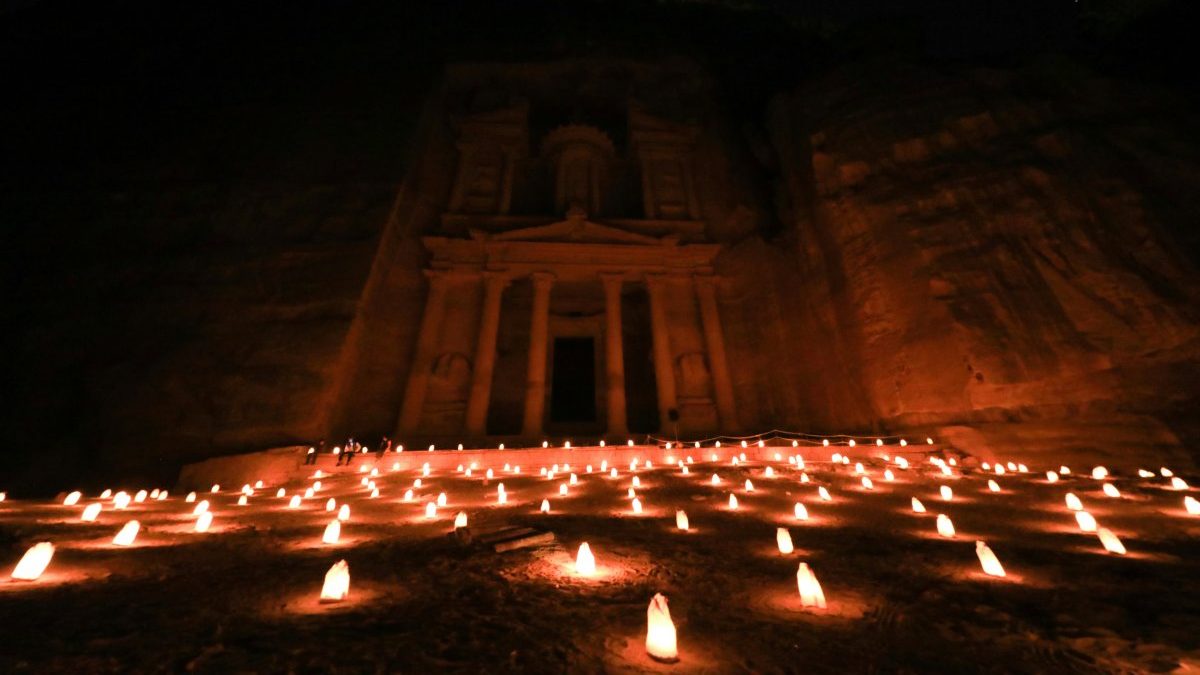
Petra by Night is a magical experience that should not be missed when visiting this ancient city. It’s an event that takes place on Monday, Wednesday, and Thursday of each week, starting at 8:30 PM and lasting for approximately two hours.
The journey begins at the entrance of Petra, where you are handed a candle-lit lantern. The path, stretching over a kilometer and leading to the Treasury, will be illuminated by more than 1,500 candles, creating a spectacular and enchanting atmosphere.
The Treasury, during “Petra by Night”, is beautifully lit up by hundreds of candles, casting a warm, golden glow. Once at the Treasury, you will be treated to a traditional Bedouin music performance. I think that “Petra by night” is a moment of peace and reflection, and is definitely worth a chance.
Tickets
A one-day ticket to visit Petracosts 50JD, a two-day ticket 55JD, and a three-day ticket 60JD. I suggest you buy the Jordan pass, which allows entry to most sites nationwide. Please note the entrance fee for Petra by Night is 17 JD, and you’ll need to pay for it even if you have the Jordan pass.
What are the Opening Hours of Petra?
The opening hours of Petra vary depending on the season.
From November to March, Petra opens at 6:00 AM and closes at 4:00 PM. In the summer months, from April to October, the site opens at 6:00 AM and closes at 6:00 PM. This allows visitors to take advantage of the longer daylight hours.
It’s important to know that the ticket office closes one hour before the site does. Therefore, make sure to purchase your tickets in advance to avoid disappointment.
Why Petra might NOT be Worth Visiting
1. It Made me Feel Harrassed
Well, let’s put it this way. The images of Petra that you see in travel magazines and Instagram timelines? Those impressive shots of the Treasury illuminating with a warm, orange glow? They’re real. But they’re only a small part of the picture.
Petra is undoubtedly a wonder of ancient architecture. Ever since its rediscovery in the 19th century, it’s attracted countless tourists, all curious to witness it first-hand.
However, there is the constant barrage of vendors trying to sell you trinkets. Yes, it’s true this happens at many tourist sites around the world, but it’s particularly aggressive in Petra.
Imagine trying to enjoy the ancient city when every few steps an insistent salesman interrupts your experiences and even follows you for miles. At some point, I even started feeling guilty when I said “no”. For me, this significantly detracts from the overall experience.
2. Petra is too Touristy
As I wrote above, Petra is classified as one of The 7 New wonders of the World, and I believe for a good reason. However, this has led to an unmanageable number of tourists, undermining the serenity that historical sites typically possess.
So, if you’re someone who appreciates silence and comfort when exploring historical treasures, Petra might leave you feeling a bit overwhelmed. And that is to say the least.
3. Petra is Overpriced for What it Offers
Let’s now consider the cost aspect of visiting Petra. You might have heard of the Petra entrance fee, which is a whopping 50 JOD (approximately USD $70.5) for non-Jordanian residents.
Sure, expensive attractions aren’t alien in the travel industry, but the value you get out of the ticket is where Petra loses points.
For an attraction of its size and fame, it’s also surprising to find out the massive additional costs which may come with a bottle or water or anything else you decide to get to refresh.
This isn’t to say that you cannot extract pleasure from your visit – there’s still the unique beauty of Petra that some do appreciate. But with grand expectations matched with a grand price, I find that the reality of Petra often falls short.
Why Petra Might be Worth a Visit
Now that I’ve covered the main reasons why Petra made me rethink my visit, it would be unfair not to mention the good things, too.
Firstly, Petra is a destination that might be worth a visit due to its historical significance. As a UNESCO World Heritage Site, it offers a unique sight into the past. The city, carved into sandstone cliffs, is proof of the advanced architecture and engineering capabilities of the Nabateans.
Another reason to visit Petra would be its natural beauty. The site is surrounded by mountains and the feelings you get while exploring in this massive site is an experience in itself. While, yes, the most popular attractions might feel crowded and overrated, the less known sites will make up to you. The best moments in Petra would be when we diverted from the tourist trail and climbed on the cliffs to enjoy the views of the valley from up above.
Lastly, despite being a popular tourist destination, Petra still holds many secrets. Only about 15% of the city has been uncovered, with the rest still lying beneath the surface. This sense of mystery and the possibility of discovering new places yourself only adds up to overall experience.
An Honest Review
From now on you will read a detailed guide on my experience in Petra, as I lived it when I visited the site.
1. The Entry
At the entrance, you will be greeted by official guides telling you that a horse ride is included in your ticket. This is partly true; you are entitled to a ride to the Treasury with the purchase of a ticket to visit Petra. However, people there will demand a generous tip, or they’ll not let you have the ride. I think it’s not worth the hustle, and you’ll have a much better experience walking.
The walk to the Treasury is very enjoyable, and passing through the rock caves creates amazing scenes. It was a fun hike, and I did not regret doing it on foot.
2. Reaching the Treasury
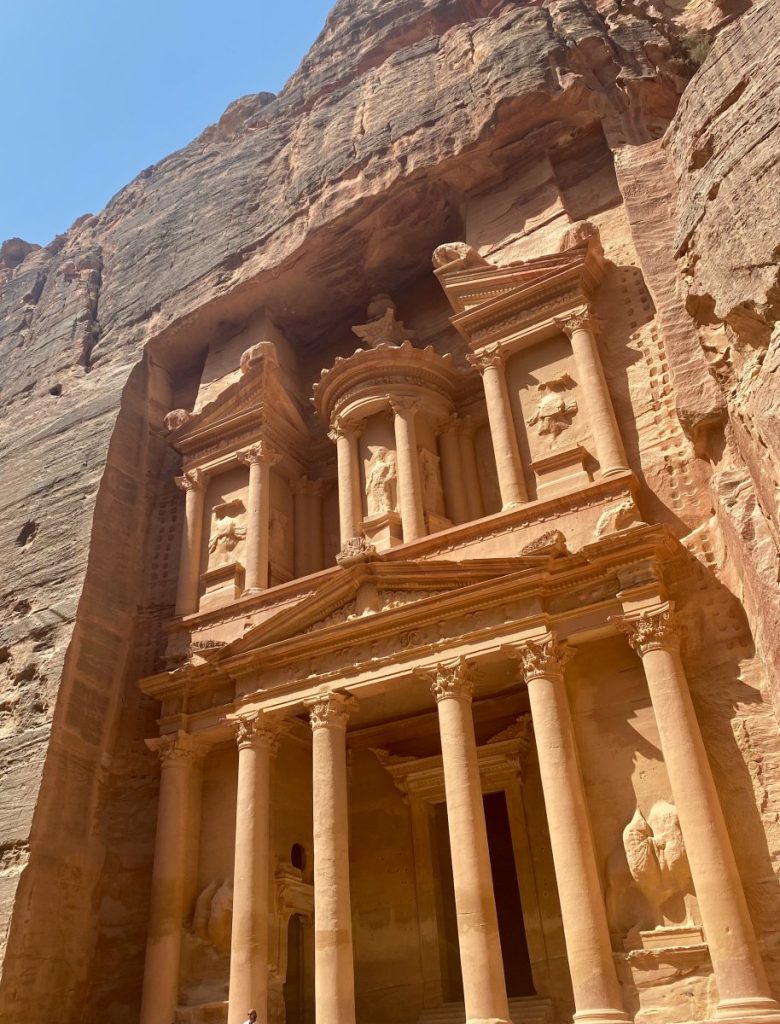
After a few minutes of walking, you will reach Petra’s famed attraction, the Treasury. While it is marketed as a prime reason to visit the site, I found it rather disappointing.
Imagine standing shoulder-to-shoulder in a swarm of visitors, each trying to find a perfect photo angle – hardly the romanticized notion of exploring an ancient site, right?
However, that wasn’t even the worst part. There were many people who promised (with a price, or a “tip”, as they call it) to take you to a high viewpoint (sometimes marked as ‘’exclusive’’) to take landscape photos. Most of the pictures you see on Instagram would be from such viewpoints.
Furthermore, they won’t let you go alone. If you try to reach the viewpoints by yourself, they will not let you go through. And, let’s remember, they are not site workers, they want to exploit you. Entry to those viewpoints is typically prohibited by local police, and those people have created their own, sometimes dangerous, paths.
Considering these factors, truth to be said, I couldn’t justify the hustle was worth the disrespect to the historical site. Instead of a unique, exploration-filled experience, the entire situation felt more like pressure-driven.
3. Arriving to the lesser known Sites
As you trace your steps to the Monastery, you will stumble upon the four Royal tombs, the Theatre and the colonial street. They are standing proof of the ancient Nabataean people’s incredible architectural and engineering skills. Not only that, but they are generally less crowded and feel less commercialized. To be completely honest, I would very much rather spend my time there than the Treasury.
4. Approaching the Monastery
If I was to pick my favorite site in the entirety of Petra, it would hands down be the Monastery. The Monastery is believed to have been built in the 1st century AD, possibly as a temple dedicated to Nabatean gods, although its exact purpose remains uncertain. The structure is similar in design to the Treasury, however, its facade is larger (and more impressive).
The walk from the Treasury is around 4 kilometers and can take between 1.5 to 2 hours. It was quite a challenging hike in the August sun, but it was worth it!
In addition, there stands a cafeteria where you can sit and enjoy a cold (yes, please!) beverage while watching this magnificent piece of architecture. I loved my time there, and I would highly recommend it! It should itself stand as a reason to visit Petra!
Tips for First-Time Visitors to Petra
- Prepare for the desert weather. The temperature during daytime can be scorching, so bring sunscreen and plenty of water with you. Comfortable, light-colored clothing is also recommended.
- Embrace the early mornings. Weather is much cooler and crowds are smaller during early morning. This is a good time to visit some of the popular sites before they take on the midday heat.
- Wear the right shoes. The terrain in Petra is mostly rocky and uneven. Wearing sturdy hiking shoes can drastically improve your comfort level.
- Save energy for the Monastery. The path to the Monastery is grueling, consisting of over 800 steps carved out of rock. The view from the top, however, is considered to be well-worth the effort.
- Use and support the local economy. Buy locally-made souvenirs instead of mass-produced items, eat local cuisine, and hire local guides. This helps support the local Bedouin economy.
- Stay for the Petra by Night show. A few times a week, the Treasury is lit by over 1,500 candles for a musical show. Some consider this to be a magical experience, though it might be more relevant if you are particularly interested in the culture or history of the area.
- Beware of scam artists. Like many popular tourist locations, Petra has its share of scams. Be aware of unofficial guides offering tours and locals selling “ancient” artifacts.
- Pay for a two-day pass if you plan to explore extensively. Petra is a vast site with numerous tombs, caves, and trails to explore. A two-day pass offers greater value if you want to see beyond the main attractions.
- Respect the site. Remember that Petra is a UNESCO World Heritage site and treat it with respect. Don’t climb on structures, leave trash behind, or remove artifacts. This ensures future generations can enjoy Petra just as we can today.
Final Thoughts – Is Petra Worth Visiting?
In weighing out the pros and cons of visiting Petra, Jordan, it’s evident that while it certainly holds historical importance and stunning architecture, there are key aspects that might make it less attractive for you as a tourist destination.
The excessive crowd, high costs, unimaginative guided tours and the intense desert heat paint a rather harsh reality. While I can’t disregard the majesty of wanting to walk through the impressive stone-carved buildings that were made over two millennium ago, it’s also crucial that you make informed decisions about your travel plans.
So, is Petra a sight worth seeing? Well, in my view, you cannot visit Jordan without going to Petra, you just can’t. While I had a much better experience in other parts of the country, I do not regret visiting Petra. However, I wouldn’t do it again if I was back to the country.
Remember, at the end of the day, the best place to travel is one where you enjoy not only the final destination but also the journey there. As a traveler, it’s essential to choose a destination that aligns both with your personal interests, and comfort levels. So, take your time, and make your next travel decision a worthy one!


